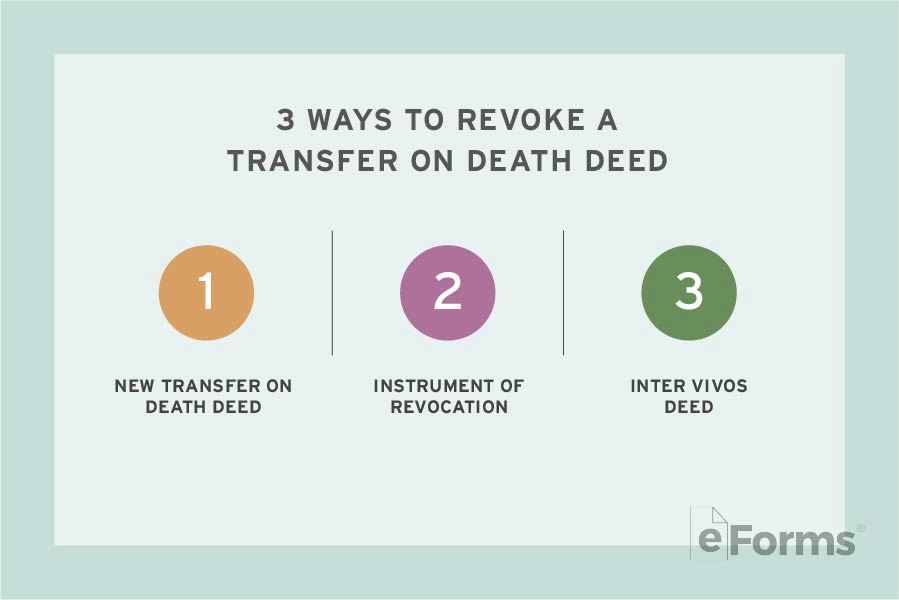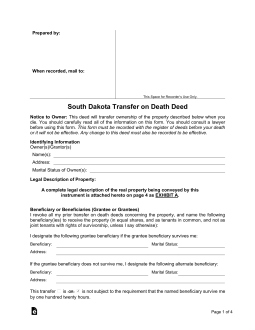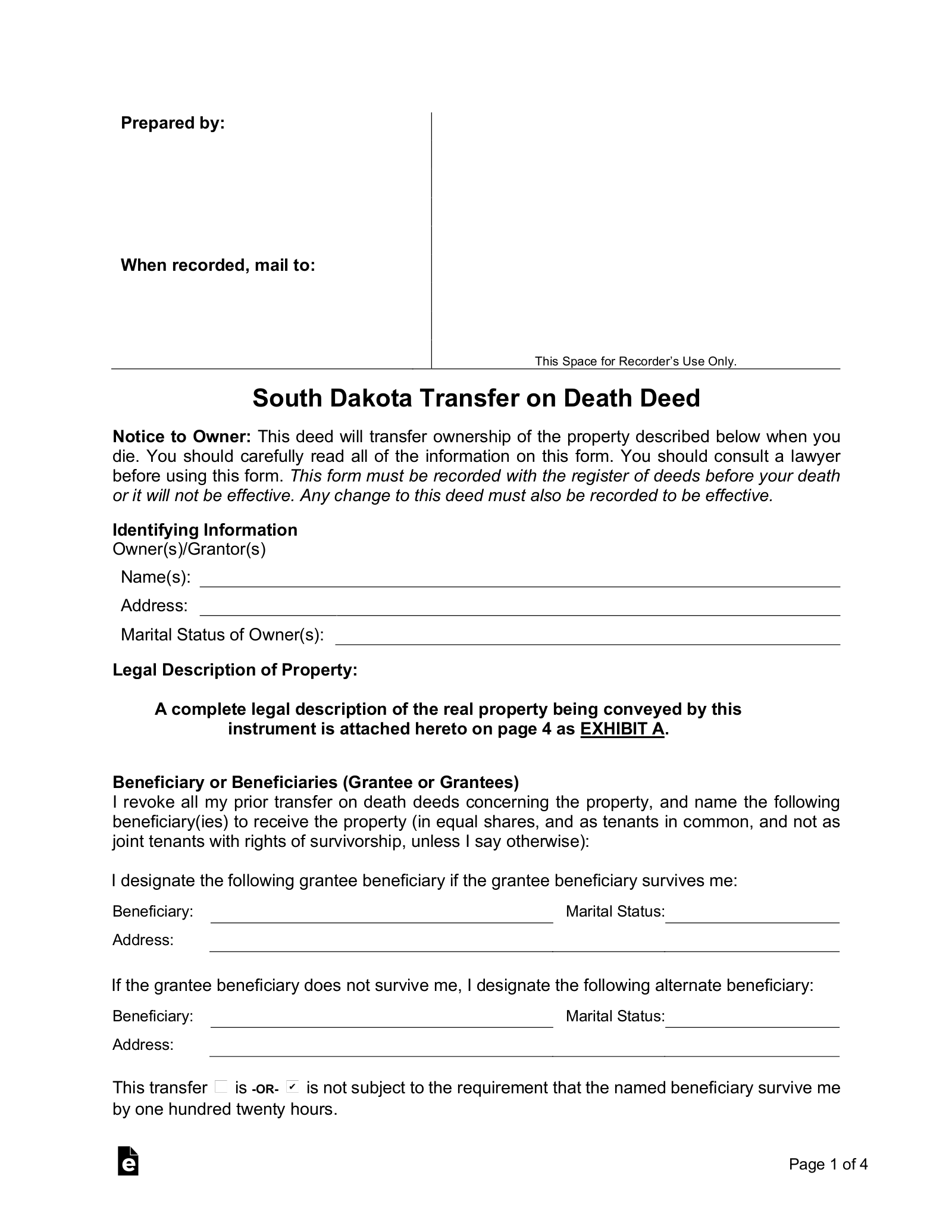Updated April 12, 2024
A South Dakota transfer on death deed allows the owner of real property to transfer their ownership to a designated beneficiary upon their death. It allows the beneficiary to avoid the complicated probate process to complete the transfer.
Table of Contents |
Requirements
- Notary: Required.[1]
- Witnesses: Not required
- Recording: Before the owner’s death in the office of the register of deeds in the county where the property is located.[2]
- Affidavit of Confirmation: The beneficiary must complete and record an affidavit of confirmation when the transferor dies in order to complete the transfer.
Legal Description
A legal description, which is a required section on a transfer on death deed, provides the exact boundaries and physical attributes to identify the real property. It typically follows the Public Land Survey System (PLSS), which divides land into townships, ranges, and sections. In addition, it provides exact measurements of the property using fractional or metes-and-bounds descriptions.
Legal descriptions of real property can be found on the property deed or by contacting the office of the register of deeds in the county where the property is located.
Example
“The South Half of the Northeast Quarter (S1/2 NE1/4) of Section Thirteen (13), Township One Hundred Seven (107) North, Range Seventy-Five (75) West of the Fourth Principal Meridian, in the County of Brown, State of South Dakota.”
Revocation

Under 29A-6-410, a transfer on death deed can be revoked or changed by using one of the following documents:
- A transfer on death deed that revokes the deed or part of the deed expressly or by inconsistency
- An instrument of revocation that expressly revokes the deed or part of the deed
- An inter vivos deed that expressly revokes the transfer on death deed or part of the deed
For the revocation to take effect, it must be recorded before the transferor’s death in the public records via the office of the register of deeds in the county where the deed is recorded.
How to Record
A transfer on death deed must be recorded prior to the transferor’s death in the public records via the office of the register of deeds in the county where the property is located.[2]


